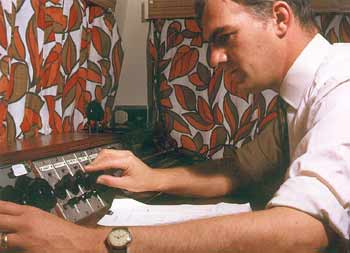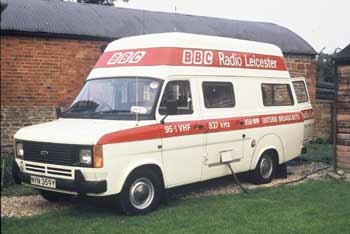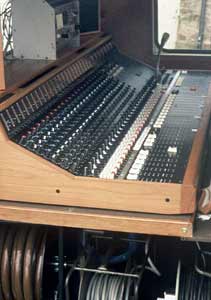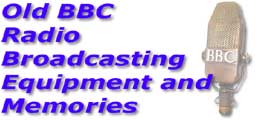Each station had a Mk I Ford Cortina Estate radio car fitted out by Transmitter Department at Brookman's Park and equipped with a Pye 24 volt transmitter operating on about 468 MHz. The equipment was mounted on a table installed where the front passenger seat had once been and the two 12 volt technical batteries were mounted in the cargo space. Two-way RT originally in the 171 MHz band, later 141 MHz, was used for communication with the studio and contributions remote from the car could be made via the Pye Pocketfone PF 1 on a second UHF frequency received back at the car. When the Phase I radio cars were replaced in 1972 the stations were supplied with a vehicle which then had to be converted into a radio car by the local engineers. Cutting the hole in the roof for the mast was the best bit!
In those early days a car radio was still an 'optional extra' which the BBC chose not to go for and so cue (and TB) had to be sent over the RT from the station. The valve operated transmitter wasn't continuously rated, so if an operator forgot to cancel the cue after a radio car insert the transmitter overheated and eventually filled the Ops Room with smoke! Epic House in Leicester had a UHF co-linear receiving aerial mounted on a mast on the flat roof of the building along with a 141 folded dipole for the RT. Remote receiving sites were added many years later which greatly extended the original reception radius of about six miles.

The author, Robert Smith, at the controls in the converted
caravan.
Little changed until the mid '70s when an OB mixer manufactured by Glen Sound was issued to each station. This was fully stereo and consisted of two MX6/2 mixer units, a DK2/4 combining unit with PPMs and monitoring controls. A Talk Back unit was also provided which was useful on more complex or live OBs. The kit had to be rigged and plugged together on site.
The equipment was very portable and each unit came with its own carrying case. An auxiliary mix, either pre- or post-fade could be generated and the equipment

The next two pictures show vehicles which were registered in 1982 (letter 'Y') so the pictures will be from about 1983. When vehicles were delivered from Transport Department, it was quite common for the first tax disc to have run out; they kept them so long! I don't believe any brand new vehicle was delivered to a station in need of an MOT certificate and any stories to that effect are entirely apocryphal!

At first each station carried out its own conversion as had been the case with the early replacement radio cars. Thus there were almost as many variations on the vehicles as there were stations! The Radio Merseyside van, for instance, was at one time garaged in a public multi-storey car park. The van had an extendible roof, no markings, and when garaged the equipment had to be covered and hidden from view for security. Before an OB could be rigged the roof had to be raised and the equipment covers removed which made OBs additionally arduous! Stations which were fortunate enough to enjoy secure garaging were able to have a signed vehicle with a permanent technical installation. As with radio cars the BBC eventually built its local radio OB vans centrally.


